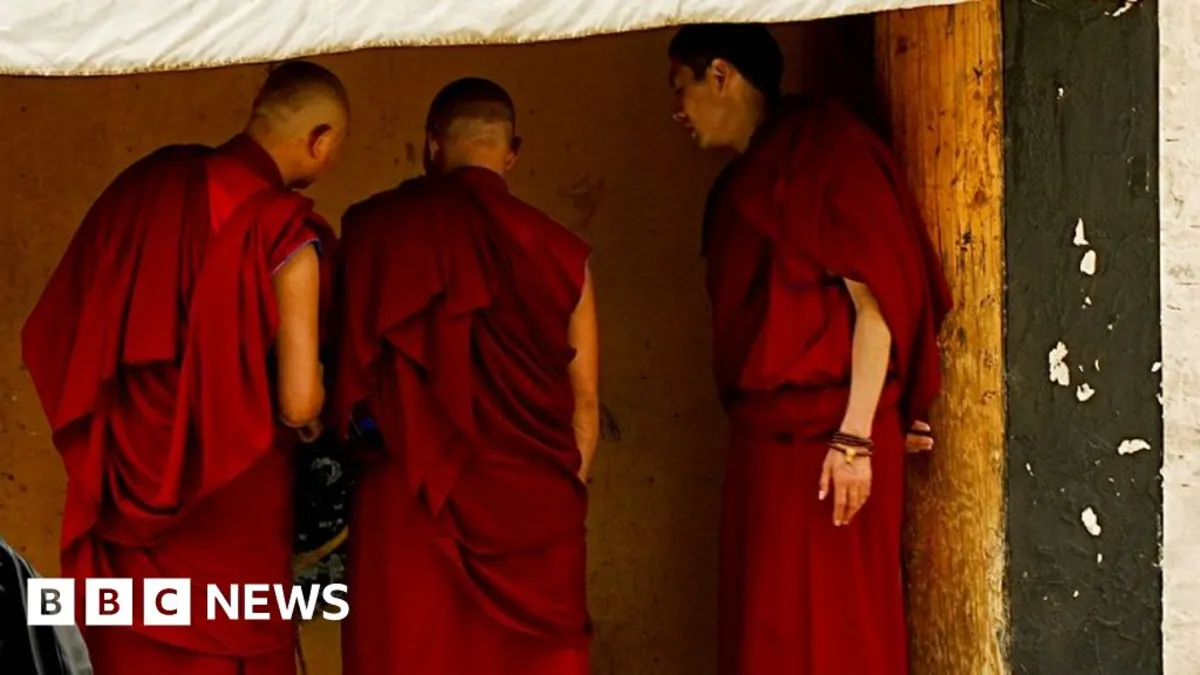
As the Dalai Lama approaches his 90th birthday, the atmosphere in Tibet remains tense and silent. In the monastery of Kirti, located in China's southwestern Sichuan province, a monk cautiously approaches, aware of the risks involved in speaking with us. He is being watched by eight unidentified men, a reminder of the heavy surveillance that characterizes life in Tibet under Chinese rule. "Things here are not good for us," he whispers, highlighting the ongoing struggle for freedom and identity among Tibetans.
The Kirti monastery has a long history as a center of Tibetan resistance. In the late 2000s, it gained international attention when Tibetans set themselves on fire to protest against Chinese governance. Nearly two decades later, the fear of reprisal still looms large in Aba, or Ngaba as it is known in Tibetan. The presence of a police station at the monastery's entrance, alongside numerous surveillance cameras, illustrates the extent to which the Chinese government is monitoring the Tibetan population.
"They do not have a good heart; everyone can see it," the monk states, cautioning us, "Be careful, people are watching you." This is a stark reminder of the Chinese Communist Party's ongoing control over the lives of more than six million Tibetans since the region's annexation in 1950.
While China has invested heavily in the region, building roads and railways to foster tourism and integration, many Tibetans who have fled assert that such economic development has come at a significant cost. The influx of troops and officials has increasingly eroded their faith and freedoms. The Chinese government views Tibet as an integral part of its territory and has labeled the Dalai Lama a separatist. Those who express support for him risk imprisonment.
In the face of these challenges, some individuals in Aba have taken extreme measures to defy restrictions. The town is located outside what China designates as the Tibet Autonomous Region (TAR), which was established in 1965 and comprises only half of the Tibetan plateau. However, millions of Tibetans live outside TAR and consider these areas an essential part of their homeland.
Aba played a pivotal role during the widespread protests of 2008, which ignited after a monk allegedly displayed a photo of the Dalai Lama. The protests escalated into riots, resulting in Chinese troops opening fire on demonstrators, with conflicting reports on the death toll—Beijing claims 22 fatalities, while exiled Tibetan groups assert that around 200 lost their lives. Following these events, over 150 self-immolations occurred, most around Aba, leading to the street being dubbed Martyr's Row.
Since then, the Chinese government has intensified its crackdown, making it increasingly difficult to ascertain the situation in Tibet. Information flows primarily from those who have escaped or the government-in-exile based in India.
In an attempt to access more information, we returned to the monastery the following day before dawn. Sneaking past our minders, we arrived just in time for the morning prayers. Monks donned their yellow hats, a symbol of the Gelug school of Buddhism, and engaged in low, sonorous chanting that resonated through the humid air. Around 30 local men and women participated, embodying the rich cultural heritage that the Chinese government seeks to suppress.
One monk lamented, "The Chinese government has poisoned the air in Tibet. We are denied basic human rights." His statement underscores the ongoing oppression and persecution faced by Tibetans, who struggle to maintain their cultural identity amid stringent regulations.
The education system in Tibet has undergone drastic changes, with new laws mandating that all children under 18 attend state-run schools and learn Mandarin. This has raised concerns among Tibetans, particularly regarding the future of Tibetan Buddhism and culture. Monks who once served as educators are now restricted in their ability to teach younger generations.
Renowned scholar Robert Barnett warns that these developments signal a future where Chinese leader Xi Jinping exerts total control over Tibet, with little room for Tibetan cultural expression. "We are moving toward an era of little information getting into Tibet and little Tibetan language being shared," he explains.
Traveling to Aba reveals the significant investment China has made in the region. A new high-speed railway connects Sichuan to other provinces, while modern hotels and cafes have emerged alongside traditional shops selling monks' robes and incense. However, the pervasive surveillance is impossible to ignore; hotel check-ins require facial recognition, and even buying petrol necessitates multiple forms of ID.
Beijing tightly controls the flow of information, particularly in Tibetan areas where the grip on communication is even more stringent. "Tibetans are locked off from the outside world," Barnett notes, pointing to the challenges faced by those living under such oppressive conditions.
With the Dalai Lama's recent announcement regarding his succession plan, the question of Tibet's future has become more pressing. Although he has lived in exile in India since 1959, he remains a symbol of hope for many Tibetans. His statement that the next Dalai Lama will be chosen after his death has elicited mixed reactions, ranging from relief to anxiety among Tibetans.
Beijing, however, is adamant that the next reincarnation of the Dalai Lama will be sanctioned by the Chinese Communist Party. This sets the stage for a potential conflict over who will be recognized as the legitimate successor, particularly given the Party's attempts to control the narrative surrounding Tibetan identity.
As we conclude our visit to the monastery, we witness women transporting heavy baskets filled with tools for construction or farming. They sing in Tibetan and smile, embodying the resilience of a culture that has fought for its identity for 75 years. The challenge now lies in preserving that identity, especially as the Dalai Lama—who symbolizes both their beliefs and their resistance—ages and approaches the end of his life.
The struggle for Tibetan rights and cultural preservation continues, as the world watches to see how the future unfolds in this region under the watchful eye of the Chinese government.